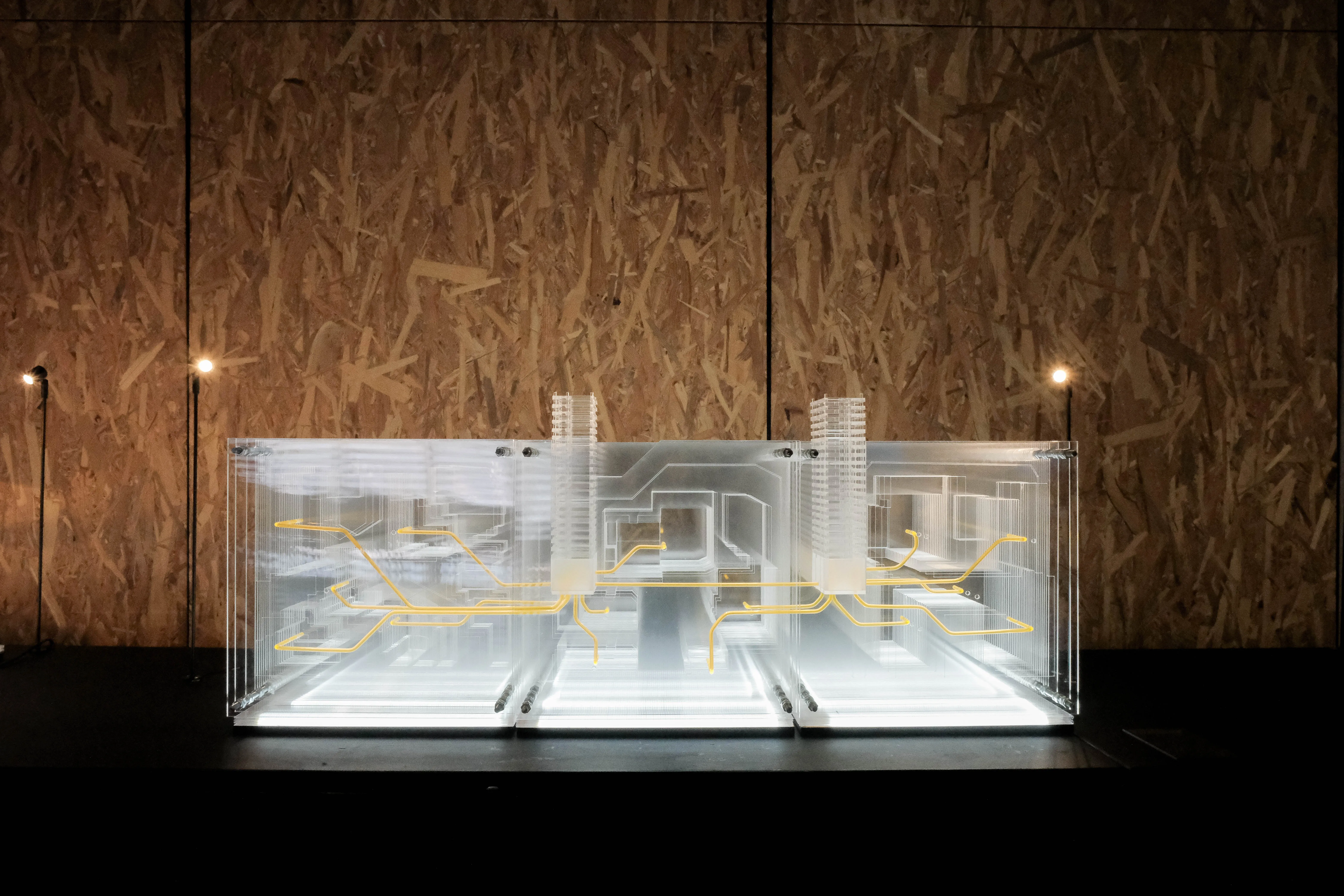Energy-Centric Architectural Thinking

#Low-carbon
#Energy
#New Architectural Typologies
#Computility
#Technological Thinking
Exhitbitor
Rong-Hao CHANG,
Sheng-Fen CHIEN
Exhibition Team
Predesign Innovation Energy
Team Member
Chang-An LIAO,
Bing-Cheng SHIH,
Ting-Wen YANG,
Yuan-Tse KAO,
Cheng-Lin TSAI,
Chia-Tzu CHIU,
Yi-Ting LAI,
Tsu-I YU
View the Printed Edition (PDF)

As AI shifts from cloud to edge computing, micro computing centers are becoming integrated into buildings as a new architectural typology. Their core value shifts to energy-related metrics: power consumption, computing power, carbon emissions, and waste heat. This design logic involves fundamental restructuring of energy flows. Key considerations include:
- Integration of renewable energy with urban structures
- Energy-centered architectural typology
- Space adaptation for evolving technology
- Waste heat recycling systems
- Community energy networks
This pushes us beyond traditional one-way grid power flow, toward dynamic energy systems in architectural spaces, integrating Taiwan’s tech advantages, AI development, IoT trends, and energy innovations.
For millennia, architecture focused on spatial scale, form, tectonics, and materials. Now, under global carbon neutrality goals, architects face an urgent challenge: fundamentally restructuring buildingenergy relationships within decades to align with carbon reduction targets. The architect’s role extends beyond spatial design - energy knowledge, MEP systems, thermodynamics, and data analytics become crucial. This transformation is the core issue of our Biennale exhibition.
Taiwan hosts tech giants from TSMC to NVIDIA. Infrastructure naturally becomes the development field for this new architectural typology. Local practical experience has the potential to pioneer a new era of “computing architecture.” By transforming Taiwan’s semiconductor expertise into architectural innovation during spatial construction, we can provide global sustainability solutions. From following architectural trends, we become creators of new computing architecture paradigms, establishing energycentric architectural thinking that integrates computational performance with low-carbon development.

ENERGY-CENTRIC ARCHITECTURAL THINKING

The widespread adoption of AI has driven energy consumption to unprecedented levels, compelling us to reimagine architectural approaches. The rise of edge computing signals more than just the miniaturization of data centers - it represents a revolutionary architectural shift where computing facilities are modularly integrated into buildings, creating distributed computing networks. “Microcomputing architecture” emerges as a new building typology.
Taiwan’s strong position in tech manufacturing and AI infrastructure presents a unique opportunity to pioneer energy-centric architectural innovation. Historically, architectural evolution has been driven by technological breakthroughs. As carbon emissions and energy concerns intensify, architects must reconsider their traditional role as spatial designers.
This architectural transformation, embodied in “micro-computing architecture,” must balance computational needs while inspiring sustainable development. It marks a shift from pure aesthetics to integrated energy systems, redefining architecture for a new era.
